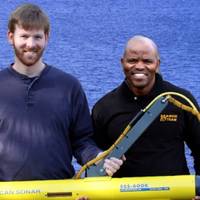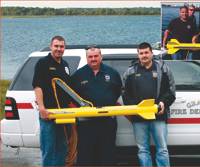JW Fishers' Side Scan Sonars Key in Somali Port Mine Clearance

JW Fishers inform that Bancroft Global Development is using its side scan sonars to locate and make safe Somalia's harbor in the capital city, Mogadishu, which was heavily mined during the civil war in that country. Somalia's Transitional Federal Government (TFG) launched the Mogadishu Port Rehabilitation Project and assisting in this work is Washington-based Bancroft Global Development, an organization that receives some funding from the United Nations and the US State Department.
Universities, Environmentalists get Help From Underwater Cameras

More universities and environmental groups are using underwater video systems to assist in their research and monitoring operations. These cameras can be very useful tools in studying benthic habitats and marine organisms, and to monitor the impact of pollution on the environment. Darling Marine Center is the marine laboratory at the University of Maine. Home to world renown research and education, the facility is situated on the shores of the Gulf of Maine with its diverse intertidal habitats.
More Public Safety Dive Teams Employ Side Scan Sonar

More public safety dive teams are adding sonar to assist in their underwater search and recovery operations. Side scan is the ideal tool for these operations because it produces detailed images of the underwater environment regardless of water clarity. In addition, the sonar is able to search large areas quickly, scanning several hundred feet of ocean, lake, or river bottom with each pass of the boat. The sonar does this by transmitting an acoustic beam from a towfish which sweeps the bottom and reflects off any objects lying there.
The Search Is On For WWII Sub Detection Networks
Prior to the outbreak of WWII the Japanese began construction of several different types of midget submarines. Recognizing the strategic importance of such a weapon for combat use, Japan built hundreds of these "mini subs" ranging in size from just under 80 ft. to over 100 ft. Designed to carry a crew of 2 to 3 sailors and armed with two torpedoes, these small subs were originally intended to be transported on ships and deployed in the path of an enemy fleet. However, very quickly the Japanese saw the advantages of using the mini subs for special operations inside enemy harbors where conventional submarines could not go. To enhance their stealth capability, the midget subs were modified to ride atop full size subs and be deployed at sea near the target location.







